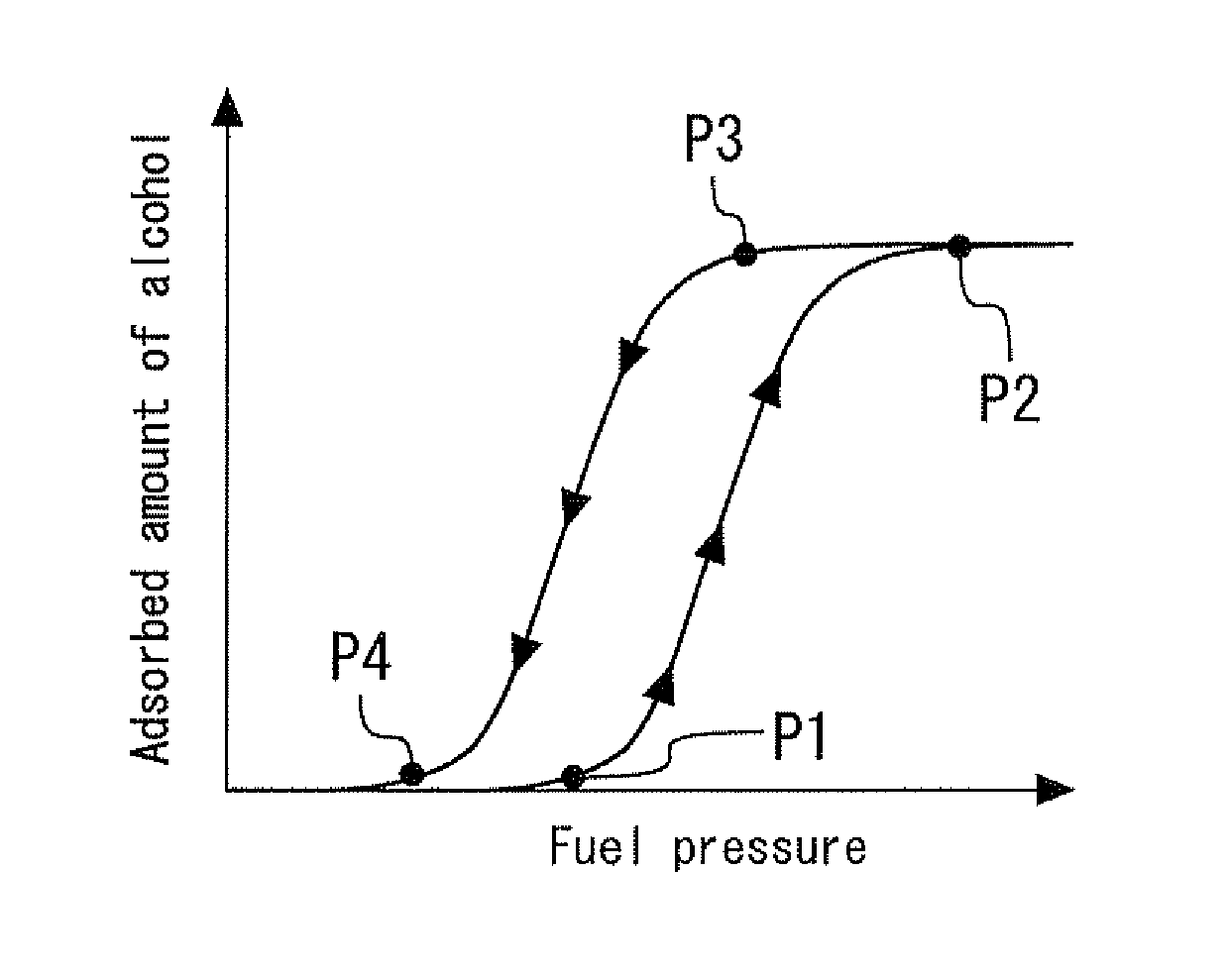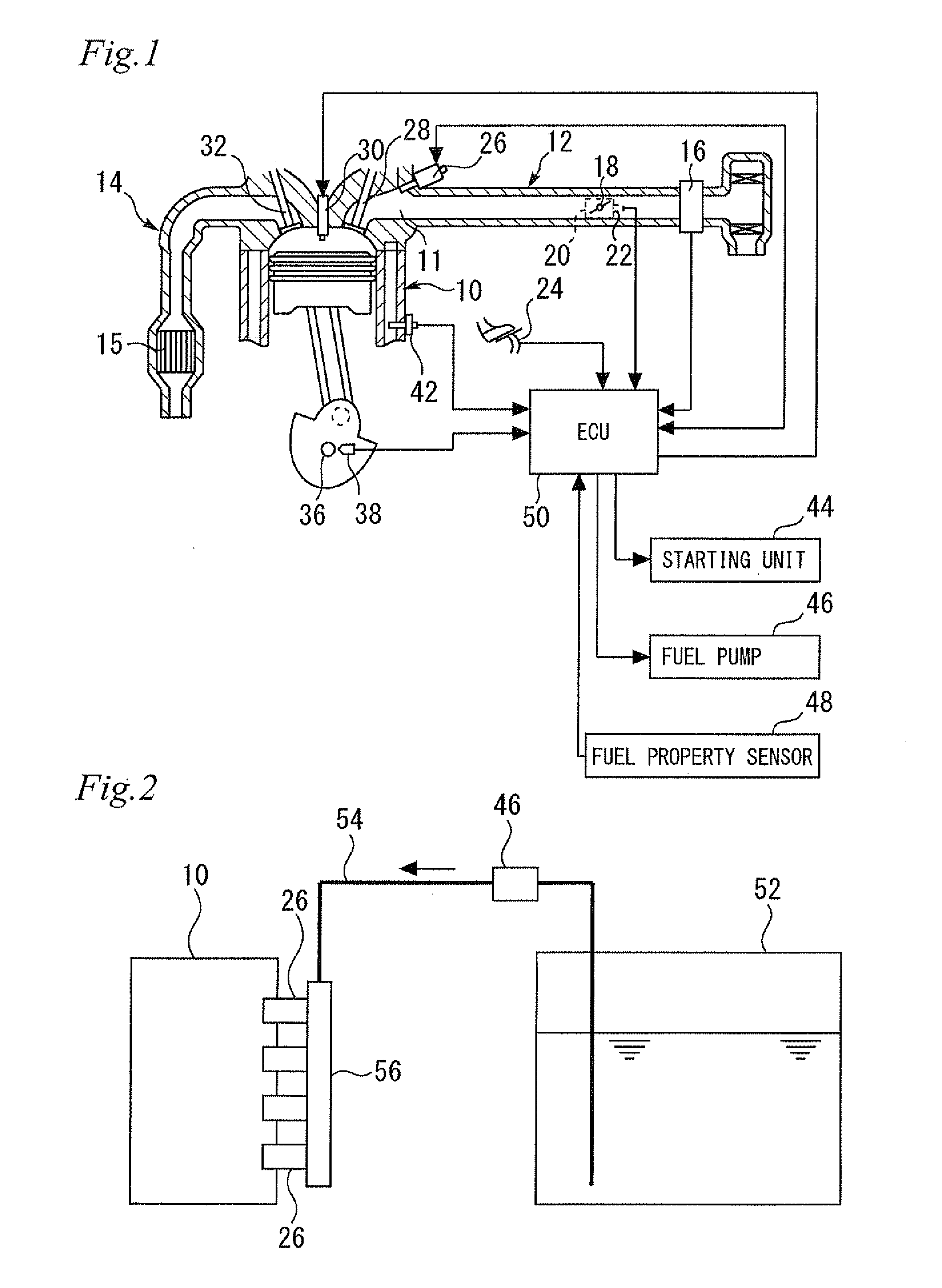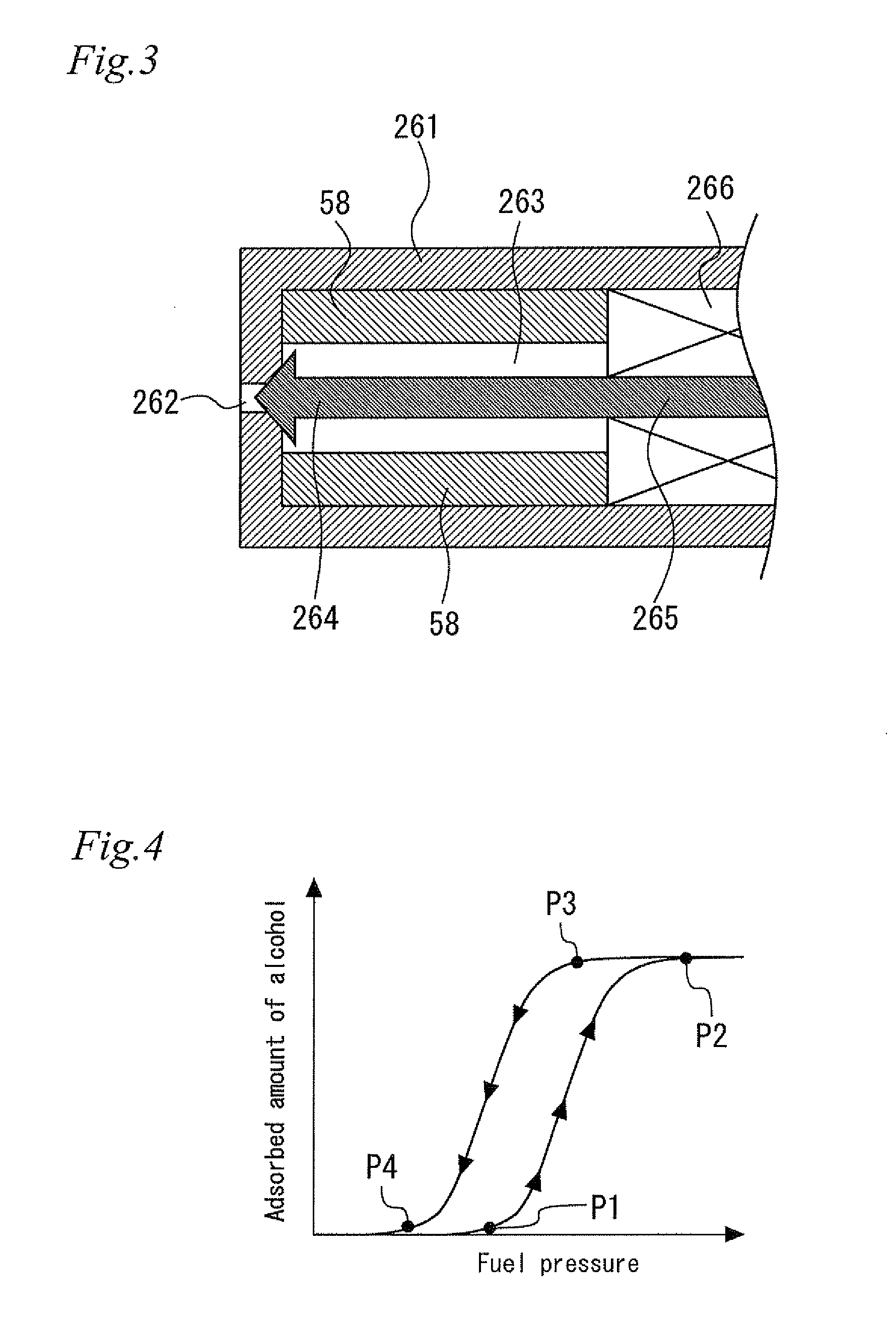Fuel injection apparatus for internal combustion engine
a fuel injection apparatus and internal combustion engine technology, applied in the direction of machines/engines, combustion-air/fuel-air treatment, electric control, etc., can solve the problems of insufficient amount of vaporized fuel, inability to start, and difficulty in vaporizing fuel at temperatures lower than the boiling point of alcohol, so as to improve fuel pressure, simplify the fuel supply system, and reduce the effect of cost and weigh
- Summary
- Abstract
- Description
- Claims
- Application Information
AI Technical Summary
Benefits of technology
Problems solved by technology
Method used
Image
Examples
first embodiment
[0067]FIG. 1 is a diagram for illustrating a system configuration of a first embodiment of the present invention. Referring to FIG. 1, the system according to this embodiment includes an internal combustion engine 10. The internal combustion engine 10 is used, for example, as a driving power source for a vehicle. The internal combustion engine 10 of this embodiment is an in-line four-cylinder type; however, the number and arrangement of cylinders of the internal combustion engine according to the present invention are not specifically limited. FIG. 1 is a cross-sectional view of a single cylinder of the internal combustion engine 10.
[0068]The internal combustion engine 10 is operable on not only gasoline, but also a fuel that is a mixture composed of gasoline and ethanol, methanol, or other type of alcohol (hereinafter referred to also as an “alcohol-blended fuel” or a “blended fuel”). In this case, the alcohol-blended fuel may range from one having a low concentration (e.g. about s...
second embodiment
[0099]A second embodiment of the present invention will be described below with reference to FIG. 6. Differences from the first embodiment described above will be mainly described and descriptions of similarities will be simplified or omitted.
[0100]In this embodiment, when a predetermined fuel cut condition is satisfied, the ECU 50 performs a fuel cut control which brings fuel injection from the fuel injector 26 to a halt. For example, when the load requirement (torque requirement) of the internal combustion engine 10 is zero and the engine speed is equal to or larger than a predetermined speed, it is determined that deceleration fuel cut conditions are satisfied and deceleration fuel cut will be performed.
[0101]As described earlier, in a cold starting in the first embodiment, the high fuel pressure control is first performed to adsorb alcohol with the adsorbent 58, and after the internal combustion engine 10 has warmed up, the high fuel pressure control is switched to the low fuel ...
third embodiment
[0111]A third embodiment of the present invention will be described below with reference to FIGS. 7 to 9. Differences from the embodiments described above will be mainly described and descriptions of similarities will be simplified or omitted.
[0112]As described above, in the second embodiment, the alcohol is desorbed from the adsorbent 58 while performing fuel cut. The control error of the air-fuel ratio caused by desorption of the alcohol is thereby prevented from occurring.
[0113]Meanwhile, in this embodiment, the alcohol is desorbed from the adsorbent 58 during combustion operation of the internal combustion engine 10. In addition, the alcohol is desorbed when the engine speed and the engine load fall within predetermined ranges, described later, to thereby suppress occurrence of control errors of air-fuel ratio. FIG. 7 is a diagram showing a range in which desorption of alcohol is permitted in this embodiment with diagonal lines.
[0114]The fuel injection amount of the fuel injecto...
PUM
 Login to View More
Login to View More Abstract
Description
Claims
Application Information
 Login to View More
Login to View More - R&D
- Intellectual Property
- Life Sciences
- Materials
- Tech Scout
- Unparalleled Data Quality
- Higher Quality Content
- 60% Fewer Hallucinations
Browse by: Latest US Patents, China's latest patents, Technical Efficacy Thesaurus, Application Domain, Technology Topic, Popular Technical Reports.
© 2025 PatSnap. All rights reserved.Legal|Privacy policy|Modern Slavery Act Transparency Statement|Sitemap|About US| Contact US: help@patsnap.com



